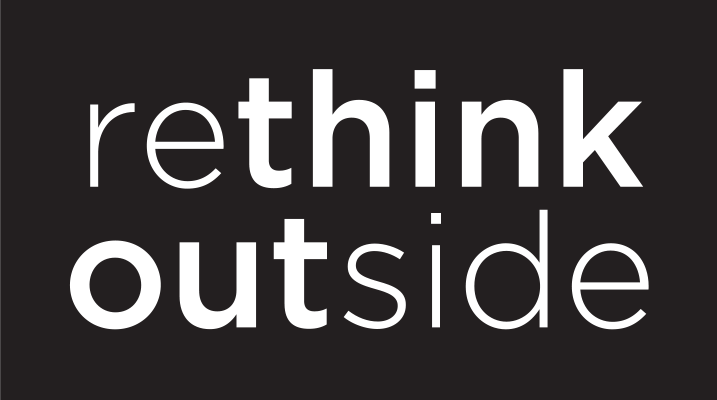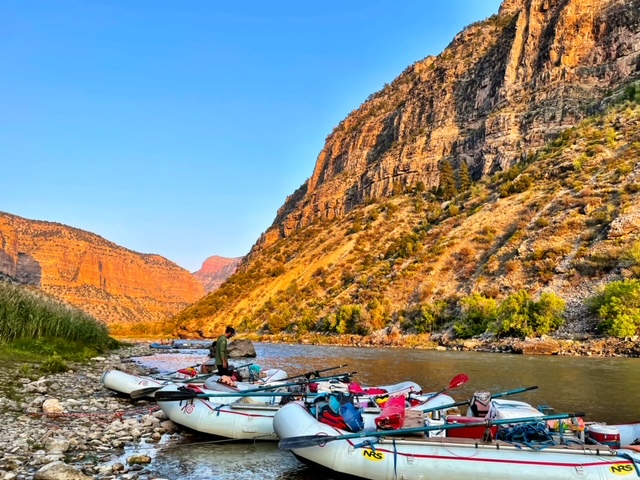This lyrical essay is based on Rethink Outside™ Storyteller Leeanna Torres’ experience on the Green River in 2021, which was supported by the FreeFlow Institute and American Rivers.
[On the Green River, Colorado River Basin, Gates of Lodore Canyon near Vernal UT, 2021]
Floating on Tyler’s raft, we ask him endless questions about geology, place names, his guiding company. As he rows us through this rio named Verde (Green), I notice his scruffy flip-flops and faded PFD, once cherry-red, now bleached into a soft maroon by years of river-sun.
It had been nearly 14 years since I’d been on a raft, and I’d never been on the well-known Green River, near Vernal, Utah.
“Morgan formation…Lodore Sandstone…” Tyler gives names to the rocks, and we listen. Some of us take notes. We ask more questions. And he is generous with his answers, and I think about the constant small talk – river guides must not only endure, but initiate, much like dental hygienists, maybe, awkward yet necessary. How many times has he retold his story, or endless facts, to strangers, rowing them down this river he calls home?
I think of my own experience, how it began not as an adventurous river guide, but a river worker, a grunt, a wanna-be-fishery-biologist, and how small-talk did not exist in this world, nor was it necessary. No lengthy or generous or even awkward conversations. Instead, imagine the constant white noise rumbling of a generator at the back of the raft, one person rowing, the other netting atop a metal deck. No small talk, just work. No time to look up at the canyon walls, keep your eyes on the water, hands on the net, look for fish. Then net them up, one by one, and into the metal live-well. A two-man job for mile after river mile.
I used to catch fish and take notes. Net and row, take measurements, and at night, drink. All of this with salty men, teaching me as much as making me prove I was worthy enough to be there. But here I am now, a full decade removed, floating for “pleasure” rather than work, not really knowing how to exist in this kind of space. Without scheduled tasks and to-do’s, who am I on this river? Tyler the river guide rows, makes it look easy, and “clients” lounge easily at the front of the raft, easing into blue.
FreeFlow Institute, a Montana-based collaborative company/organization, claims to offer “wilderness arts workshops” including seminars, workshops, and adventures for creative people in Earth’s wildest classrooms.
“By offering intelligently structured, professionally catered trips into wild spaces, FreeFlow Institute affords established and emerging writers, artists, and leaders the time, community, and inspiration to take their practice outside and build creative cohorts of advocates for thoughtful, strategic environmental preservation.”
When I first heard about this company, I quickly searched for their website, but then disappointingly saw the high price tag for the river trips they were offering. I couldn’t afford such a “craft-based-adventure”. The only “adventure” I knew at that point was through work, not recreation, nor leisure, nor learning. In my childhood, nor even early adult-hood, my upbringing did not make space for such formalities as “recreation”. On Papa’s farm/ranch we worked, and when I emerged from college, I worked some more, introduced to rivers in this way. Not through recreation. But when the FreeFlow Institute began offering “Emerging Writers Scholarships”, I knew I had to try. Something urged me to try. (https://freeflowinstitute.com/ )
It’s one thing to “try”, to put effort out into the world. I’d been doing so for years, trying to build a writing life for myself by literary submission here and there, here and there, rejection after rejection. But this time, yes this time, someone/something had given me a chance.
“…We are thrilled to offer you the 2021 Southwest Emerging Artists Scholarship. We hope that the Gates of Lodore Workshop will help you bring your Gila project to fruition, expand your community of writers, and increase your capacity as an advocate for wild rivers.” Explained the acceptance email from FreeFlow Institute and American Rivers(org).
In essence, there ARE organizations out there intentionally “creating equitable outdoor experiences” for people of color and/or from marginalized populations.
There are groups making beautiful spaces for us.
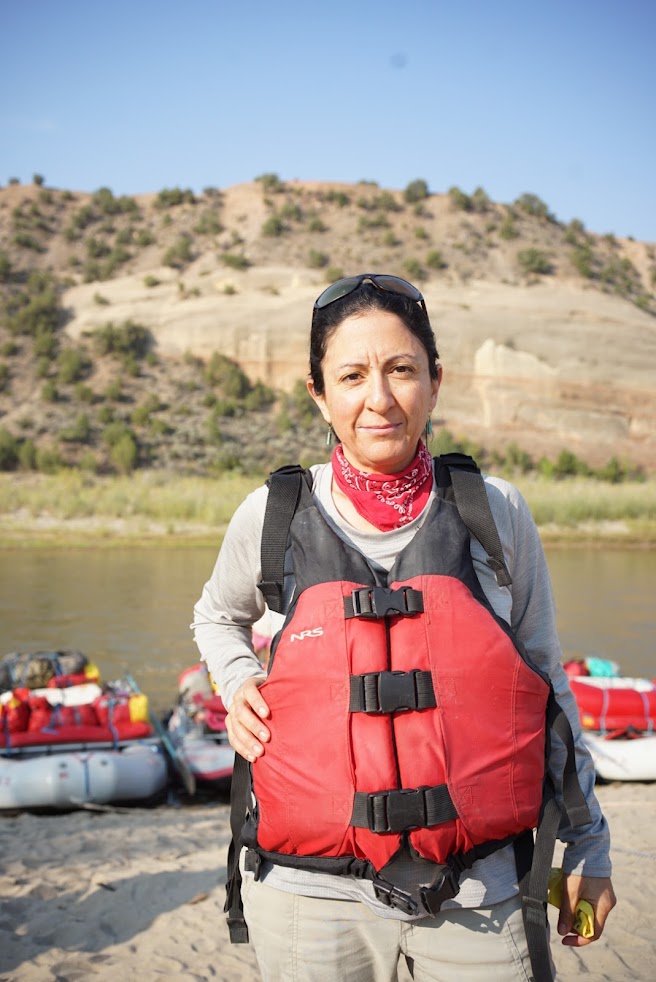
Women on the raft crack open a beer in Echo Park, just as we reach the confluence. Nicole chooses a PBR, T. a Sierra Nevada Ale. And me, I choose only water, the thin-blue-plastic strap, connecting the lid to my Nalgene bottle – broken – but I’ve replaced it with a piece of Papa’s echete. This orange strand left-over from a used bale of hay, borrowed from Papa’s stash in the cochera. This string – echete taken from my home in Nueve Mexico, mi querencia – holds lid to water bottle, its bright orange out of place, out of context, but strong.
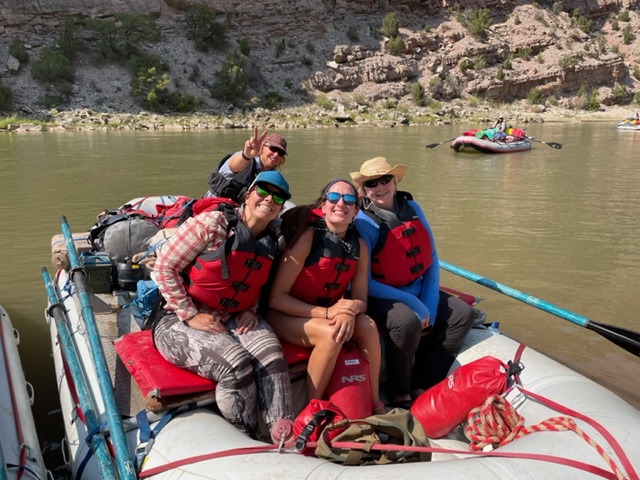
At the confluence of the Green and Yampa rivers, our eyes spot a heron. And as the rafts float by, the river guides intentionally slow at this point, their movement of pause indicating importance.
The heron flies away, and T. takes another sip from her beer, and they both seem to lean into daylight with such ease that it makes a part of me achy, angry. Or maybe not angry, but something else I don’t yet have a name for.
I crouch down in the raft, reach my arm up and over the side, and greet the Yampa River with this small gesture.
Quien somos aqui? Who are we in this place, this space, this journey down the Green River?
*
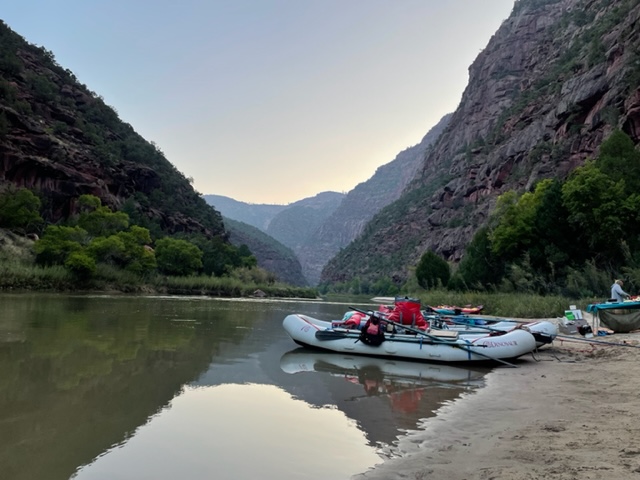
During lunch on the third day of the trip, I observe as T. drifts off over to the farthest shore and sits in a way that I’d guess she’s meditating. Chandra and Ashley sit in the sun, bathing their torsos, browning as they wear only shorts and sports bras. And still, T. mediates, a small figure in the distance, flanked by the green of cottonwoods below the canyon wall, then sky. She is so small in this monumental back-drop, and yet, her pose graciously asks for attention. She is small in this landscape. Meditating, seated in the sand, she keeps her back to the sun. A therapist from Vermont who is taking time away from clients in the recent wake of her father’s death. A woman flanked by deep geologic time. And it is nearly time for lunch.
*“How can we make the general public want to save wild places?” asked Chandra Brown, founder and director of Freeflow Institute, and my scribbled response in a small field notebook goes something like this; “Do the work that’s assigned to you, do the work, whatever form that work might take – write the article, make the podcast, share the experience with your Tia or prima at the dinner table – but just DO your own work…that’s all you can do…”
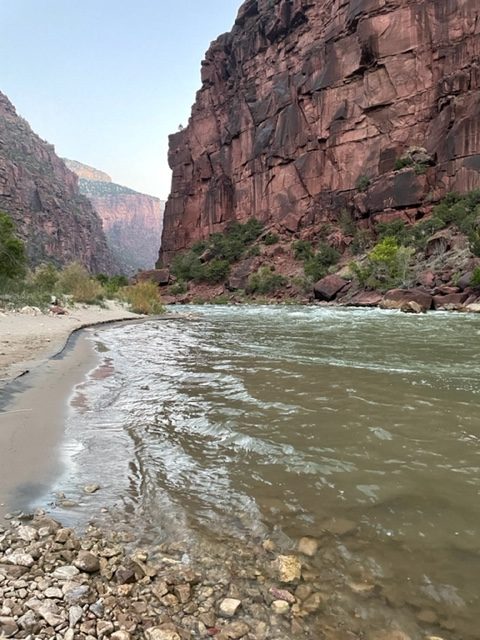
Watch the little merganser (duck) allow his little body easily approaching the rapids. The top of his head with feathers-all-a-mess, like the little kid who hasn’t combed his hair, wild, disobedient, or maybe just careless. Why doesn’t this little duck just fly over the rushing water rapids? Instead, he floats into the turbulent water letting the rapids appear, allowing the moving chaos of water take him quite easily, and he bobs, up and down, up and down, until he’s down-river and out of sight.
*
On our last evening on the river, during what Chandra called “the Magic Hour” (twilight), two beavers made an appearance on the shoreline across from camp. Watched them eat grass, then slowly enter the water, un-disturbed by our presence. Then they swam away. About 10 minutes after this, two deer, like ghosts coming off shoreline and into the water. A buck and a doe. They remained in the water until twilight darkened, one scarcely seen drifting back onto land, the other still in the water until it was too dark to make out even his shadow.
That night I slept without a tent. My rental sleeping bag – a Marrmott “Sorcerer S.R.” with a deep Army green body, black interior, and lime green strip along the zipper line – wasn’t warm enough for the last night outside of the canyon. Tyler had warned us that without the protection of the high canyon walls we’d experienced thus far, it would get cold. And he was right. And so my tiny shivering body buckled and tightened inside the green Marmott sleeping bag, the galaxies revealing themselves across the kettle-black sky. And then strange dreams again; my Tio Max in the dream this time, and a morning sky revealed the constellations Orion and my favorite, the Seven Sisters.
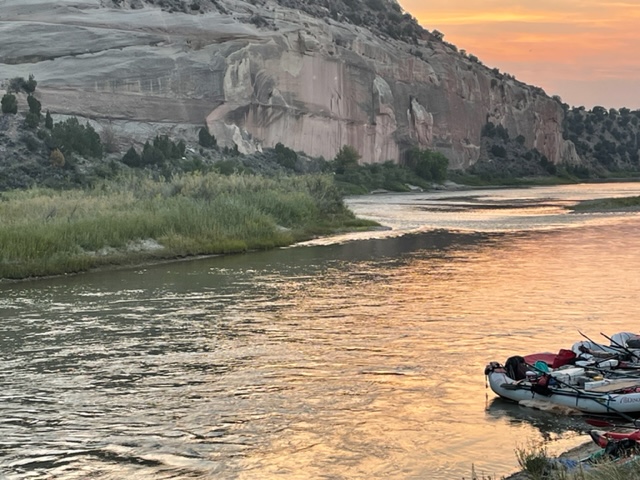
We are so often (maybe too often) looking for answers, looking for the key, looking for ways to make it all right, to save, to keep, to protect. But what a weight, and I watch the semi-glassy eyes of the two youngest river guides, the truth found in the way they slouch into the sand so easily, knowing just then, that all they want is a beer. We can’t make people care or change. We can only share our experience of a place, invite them in. A red cooler sits in the center of our group circle as we write, and we linger over the power of place as the river runs freely in the very space where there would have been, nearly was, a dam.
*
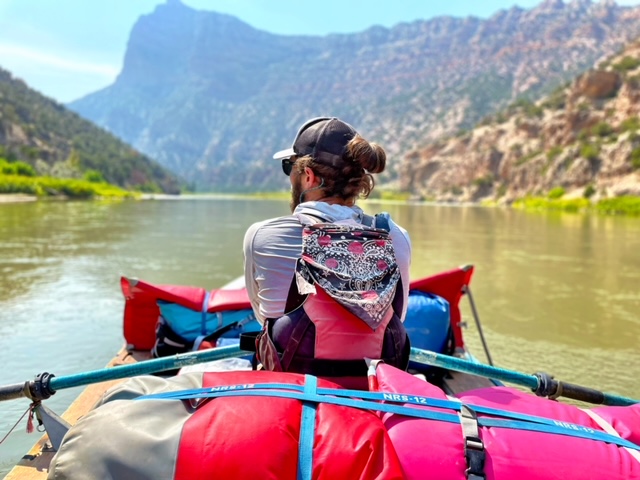
Jacobe the river-guide keeps his plastic bottle of “Old Crow” whiskey in the interior of the NRS “strap” bag to his left of this throne at the oars. “It’s actually pretty good cheap whiskey,” is his response when I ask him about the brand. And I imagine how snug and comfy that bottle must rest, cradled and hugged against the mess of blue-ribboned NRS straps of all sizes; a hard liquor, liquid-honey-brown against straps size length 6,3,9,12, and maybe even 2 and 14 feet.
We pass big-horn sheep grazing on river-left, eleven females grazing, while a lone, single ram, lays in the grass. And I snap a photo of Jacobe’s whiskey in the strap bag, not sure why. The eleven female rams grazing near the water’s edge, their white rumps distinct on their bodies in this bright sun.
*
FreeFlow Institute and American Rivers made it possible, and continues to make it possible for someone like me to experience an epic journey on the Green River. By offering FULL TUITION scholarships to ‘emerging’ writers and/or artists from the Southwest (including NM, AZ, CO, or UT), these well intended groups are putting actual funding efforts into promoting and inviting more participation by communities or groups often left in the margins. For example, the annual scholarships intentionally invite BIPOC applicants.
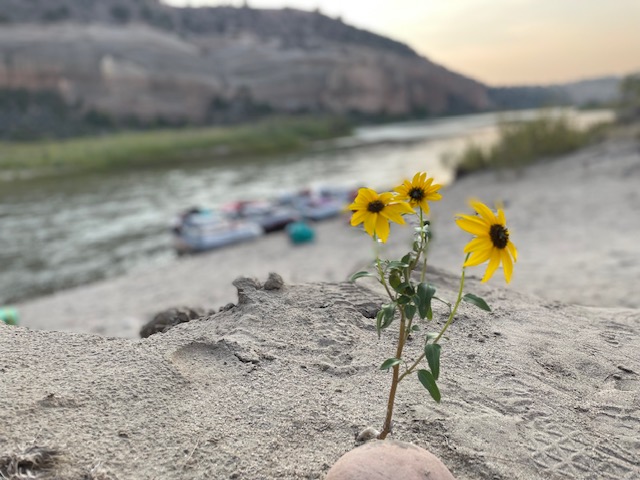
It is organizations such as these – FreeFlow Institute & American Rivers – that are intentionally and carefully making space for other narratives. I experienced it myself, and am a better person because of it.
The opportunity they provided was a chance to experience a river simply as joy and newness and recreation, rather than work, the only way I’d ever known. These organizations provided the opportunity of experience, simply experience.
So how will I now pass it on? By writing and sharing, by expanding the circle, by exploring the rio in all its forms.
*
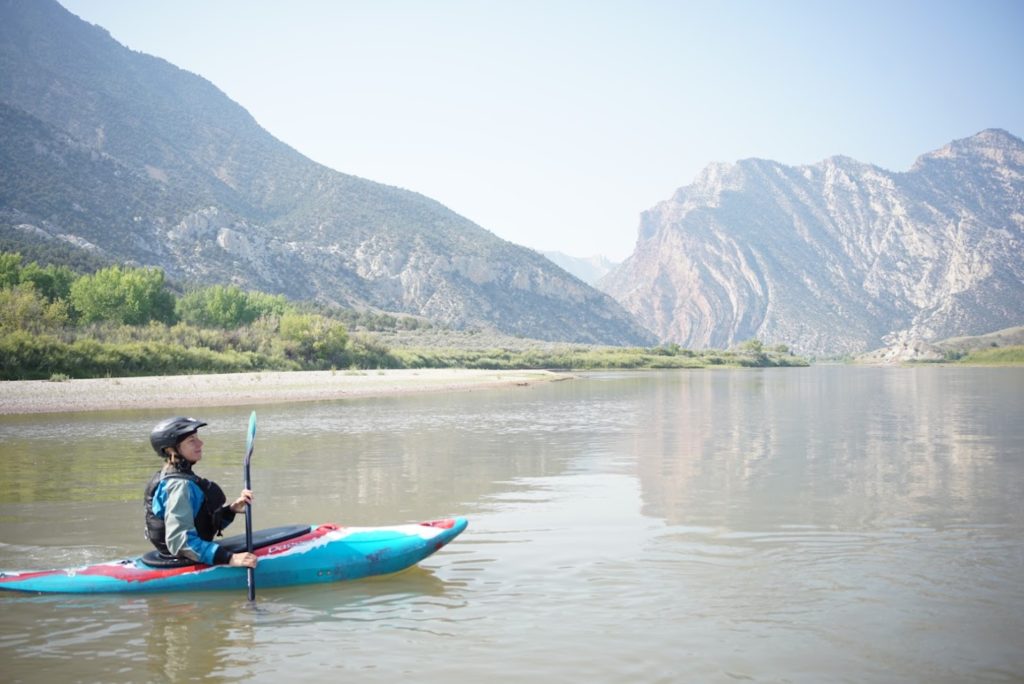
Between Triplets Falls rapids and Hell’s Half Mile I watch Chandra move through the water in her kayak. Black helmet, no sunglasses, and a blue-body-grey sleeve kayak dry top jacket. Kayak colored a bright (but sun-worn) turquoise; and room for a bit of pink at the top front of the craft, something typical for the Dagger-brand kayak perhaps. While paddling, she is straight-backed and solid, confident like a samurai, but also so curious, cautious, and respectful of the water and rapids. In her kayak her posture and form perfected, her double-grip on the black paddle tight and solid when running through rapids, loose and soft in the slower water. After making it thru Hell’s Half Mile, and just past the rock named “Lucifer”, she quickly maneuvers herself behind a rock, an eddy, just below the rapid, then waits there and watches, her turquoise craft bobbing lightly in the wake behind the massive rock, and she waits, watches, ensuring all three of the ladies in the inflatable kayaks make it through the rapids safely.
“Is this your first time kayaking Lodore?” [me]
“Yeah, it is. This is actually also only my second time here on this river…the first time was in 2019 with Freeflow’s course with Pam Houston.” [Chandra]
“So you didn’t have your kayak on that trip?” [me]
“No, I didn’t. I was a passenger. It’s hard for me being a passenger…Also being on a kayak, you get to experience the river very differently…it’s much more intimate…” [Chandra]
Chandra Brown’s FreeFlow institute is a LEADER in what it means to make space for marginalized groups/people in recreation. “It’s hard for me being a passenger,” she admitted to me during a sandbar conversation on the Rio Verde, and so I realize now, many months after this adventurous trip, her intent then is to be a leader, to make that space, to grant experiences to those of us who would not otherwise ever have them.
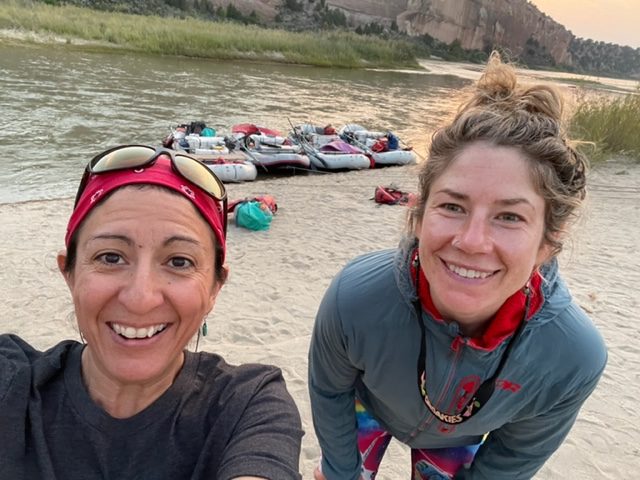
Our last night on the river, I noticed Tyler, the elder river guide, was the only staff member who did NOT follow the rest of the river guide’s time-honored tradition – to dress up silly or wild or flamboyant. Instead, he remained in his usual, casual, ever dependable river-uniform: quick-dry shorts, sandals, quick dry t shirt, and a ballcap. By far, he was the oldest river guide on the trip. I wondered how many miles he’d put in, all these years, all those long river miles. As twilight approached, his demeanor remained calm, approachable, but reserved and quiet, unless asked a question. He seemed to know and honor the wordlessness of the river space – an ecosystem driven and given life by one main element – water.
Agua.
In my beloved home, the desert Southwest, water is more than life – it is sacred. Sagrado.
During what Chandra named/called “The Magic Hour” (twilight), two beavers made an appearance on the shoreline across from camp. Watched them eat grass, then slowly enter the water, undisturbed by our presence. Then they swam away. Soon after, two deer, like ghosts coming off from the bank-shoreline, made their way into the water, into the river. A buck and a doe. And we watched the animals wade in the water, up to their bellies, watching them until it became too dark to see them.
I used to catch fish and take notes. Net and row, take measurements, and at night, drink. All of this with salty-men, teaching me as much as making me prove I was worthy enough to be there.
But here now, on the Green River, I was learning – very differently, but always the same – the sacredness of water, redefining my own relationship to rivers and water.
*
Our last day, our last river-mile on the Green river, it isn’t Tyler the river guide I float with, yet still, I watch him in the raft behind ours. I crouch down in the raft, reach my arm up and over the side, touching the water with such a small gesture I hope no one else sees.
I think back to the men who introduced me to rivers – their persistent stubbornness, showing me where to find fish, the read of riffle-pool-runs. All science, no nonsense.
And then there is Tyler, the lead river runner, showing strangers the heart of a river.
“My grandfather was a river-guide too” explains Tyer, straight backed and rowing, his voice laced with unabashed pride, easy and calm. What he offers is generous, genuine, and I offer him nothing back except my lazy presence on this raft. And his hands on the black oars, a grip as old as stone itself.
THE END.
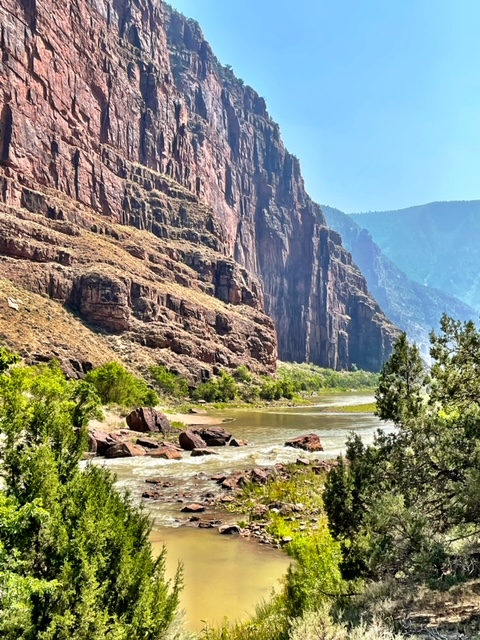
Leeanna T. Torres (she/her) is a native daughter of the American Southwest, a Nuevomexicana who has worked as an environmental professional throughout the West since 2001. Her essays have appeared in publications including Blue Mesa Review, Tupelo Quarterly, Eastern Iowa Review, Minding Nature, High Country News, Ofrenda Magazine, High Desert Journal, and Ruminate Magazine. More recently, she has an essay in Torrey House Press First & Wildest; The Gila Wilderness at 100 (2022) anthology. She is also currently at work on a creative-non-fiction book manuscript centered-on landscape, culture & querencia.
